When I was little I loved the classic Universal horror films. Frankenstein, the Mummy, Dracula, and the Wolfman pictures fed my burgeoning appetite for scary stuff. I checked out all the books at my elementary school library where they had a whole series on Universal's monsters. And as for a lot of film buffs my age, late night creature features were my first experiences fighting the need for REM sleep as a drowsy six year old.
When I hit my teens I discovered the Hammer remakes - Peter Cushing and Christopher Lee's enduring portrayals of the classic characters were only part of the equation. Add lots of blood, gothic english atmosphere, busty babes in low cut period attire, and gory special effects -- IN COLOR -- and you've got the reboots to end all reboots. I assure you, looking at those beauty queens with bloody fangs had an entirely different effect on my teenage constitution.
I could name a hundred reasons I liked the "Hammer House of Horror", but I think Marty summed it up best --
When I hit my teens I discovered the Hammer remakes - Peter Cushing and Christopher Lee's enduring portrayals of the classic characters were only part of the equation. Add lots of blood, gothic english atmosphere, busty babes in low cut period attire, and gory special effects -- IN COLOR -- and you've got the reboots to end all reboots. I assure you, looking at those beauty queens with bloody fangs had an entirely different effect on my teenage constitution.
I could name a hundred reasons I liked the "Hammer House of Horror", but I think Marty summed it up best --
"In my early teens, I went with groups of
friends to go see certain films. If we saw
the logo of Hammer films we knew it was
going to be a very special picture...a sur-
prising experience, usually - and shocking...
MARTIN SCORSESE
from THE STUDIO THAT DRIPPED BLOOD
Studio bio from the excellent Hammer House of Horror website -
Studio bio from the excellent Hammer House of Horror website -
In May of 1957, a British horror film called THE CURSE OF FRANKENSTEIN opened in London. It was a film that would make international stars of Christopher Lee and Peter Cushing and HAMMER FILMS a household word. At the time Hammer Films was making 5 films a year and no one at the studio had any idea what a success this film would be. Costing under 70,000 pounds, THE CURSE OF FRANKENSTEIN was an overnight success. Hammer films was not born here. The history of that famous studio goes much further back.
Enrique Carreras (1880-1950) was born in Spain. He moved to England and opened up a theater which could be considered one of the first multi-plex. It was actually two theaers that showed different movies and seated 2000 people. The theater was called Blue Halls and was soon turned into a chain of theaters. In the late 1920's Carreras formed Exclusive Films to serve as a distribution company for films in England. During this time a vaudeville act billed as Hammer And Smith began appearing in England. William Hinds was the Hammer of Hammer and Smith. Carreras and Hinds met and formed a partnership in 1932 and secured the distribution rights to several British Lion pictures. It was decided that a seperate company would be formed to produce movies for Exclusive the distribute. The studio was to be called HAMMER FILMS.
Their first film was THE PUBLIC LIFE OF HENRY THE 9TH, followed by THE MYSTERY OF THE MARY CELESTE (THE PHANTOM SHIP). Over the next 2 decades Hammer Films existed to create a myriad of B Grade films and short subjects. Most of the films were crime dramas. Many of these films can no longer been seen but they provided a comfortable existance for Carreras and Hinds.
The studio began to for a family environment when James Carreras (1909-1990), Enrique's son, joined the Exclusive team in 1939. Anthony Hinds (1922- ), Williams son also joined the studio in 1939. Their first stay with the company was short lived though. War had broke out in Europe and both sons went off to fight. In 1946, both returned to their father's little film company. James Carreras son Michael joined the Exclusive team in 1943. Like his father, he was called of to military service. He also returned to the studio after the war.
The making of Hammer Films was done is several country houses instead of the conventional studio, like in Hollywood. While filming THE LADY CRAVED EXCITEMENT in 1950 at Oakley Court, the studio became interested in obtaining the neighboring Down Place as a permanent home for their studio. It was owned by George Davies and his wife. George was a bit of a film fan who agreed to sell the place provided that he and his wife could stay on. Though they never really got involved in the process of making movies, George served as a clapper boy on several Hammer Productions.
Oakley Court had an historical background. It was built in 1859 by Sir Richard Hall Say. It was used by the French Resistance in Word War II and served as host to many film companies until 1979, when it was sold and converted into a hotel.
In the 1950's Exclusive fell into the good fortune of establishing important distribution rights with American companies. One key acquisition was with Robert Lippert Productions. The partnership was important because it allowed Hammer the rights to use fading but recognizable American stars in their British productions making them more accessible to the American audiences.
A staple of Hammer Films was the BBC radio serials. Hammer secured the rights to several of these productions and turned them into feature films. After the purchase of the Dick Barton series from the BBC they found a BBC series called THE QUATERMASS EXPERIMENT and with some negotiation, the Quatermass series became the property of the studio and the feature film version of THE QUATERMASS EXPERIMENT began.
The film proved to be successful encouraging the studio to look for other horror properties that could be exploited since the monster theme worked very well in QUATERMASS. They decided upon Mary Shelley's Frankenstein, since the book was public domain and the Universal film FRANKENSTEIN (1931) was viewed by many as a horror classic. As soon a Universal heard of the remake they made HAMMER aware that if they copied anything from the UNIVERSAL film that wasn't in the Mary Shelley novel, including the classic make-up, they would sue. A script was devised and new make-up designed. Though still not very faithful to the original story, the Hammer version was faster paced and featured more shock elements than the original. This was also true of the gruelling make-up that imprisoned Christopher Lee's expressive facial movements. It all worked together though and the audiences were shocked and amazed by this new version of the familiar story.
Critics were shocked and amazed too. In fact, most critics warned against seeing the film calling it disgusting and horrendous. This only served to fuel the fire, a lesson that critics have not learned to this day. When the critics hate a horror film, it must be worth seeing. Looking at the film today, it's difficult to imagine why the film was found to be so repulsive, but there had never been anything like it up to that time.
But beyond the images two actors began to break through, Peter Cushing, who developed the cold, impassioned and amoral Baron Frankenstein into a likeable anti-hero and Lee turned the monster creation into his own, carving a niche beside Karloff's classic interpretation.
By now the family environment was spilling over at Bray Studios. Besides the Carreras and Hinds connections, a careful study of the film credits reveals many similar names both in the cast and production credits. Jimmy Sangster, who would write many of the classic Hammer screenplays, Len Harris, a skilled cameraman giving the filmsthat special HAMMER look and James Meade who served as editor many of the classic HAMMER films giving them those tremendous shock sequences that we all remember so well.
Also coming aboard the HAMMER FILM team was Terence Fisher as director. His visionary style and imaginative use of Bray Studios would set the tone for the HAMMER FILMS to come. His background as an editor helped save the studio thousands of dollars in developing just the right shots. His styling and the committed work of the technical staff turned a studio that was cranking out B films into a studio who granted the illusion of A quality films and the look of much larger studios like Pinewood and England's MGM studio.
Bray studio quickly became everything from European villages to London houses to Spanish villages as seen in THE CURSE OF THE WEREWOLF, a film that launched the career of a young Oliver Reed.
It was during this time that a decision to make the Hammer films back to back was implemented. The decision was financially motivated since it would be cheaper to utilize the same cast and crew and make the films consecutively than it would be to stop and have to continually develop new stories in between. This style of filmmaking can be evidenced in DRACULA-PRINCE OF DARKNESS and RASPUTIN, THE MAD MONK. Both films feature much of the same cast and technical crew. In fact the same set used for the destruction of Dracula in the same set used in the final scene where Rasputin falls out of a window and onto his icy grave. THE REPTILE and PLAGUE OF THE ZOMBIES followed next using the same strategy.
To keep audiences from noticing the similarities to the films they were released on double bills as DRACULA-PRINCE OF DARKNESS with PLAGUE OF THE ZOMBIES and RASPUTIN, THE MAD MONK with THE REPTILE.
RASPUTIN provided Lee with a meaty role and many critics believes that this was Lee's best performance in any film. PLAGUE OF THE ZOMBIES was also a trendsetter in that it features zombies returning from the grave 2 full years before George Romero's classic nightmare NIGHT OF THE LIVING DEAD would ever hit the screen.
The studio flourished through the 1960's but as the decade was closing a change in the direction of the studio was becoming evident, thanks in part to Michael Carreras becoming the company director after his grandfather's death in 1950. The horror films began to look like they were following a simple formula and more psychological thrillers were coming out of the studio after the success of Hitchcock's PSYCHO. As the box-office receipts started to drop, Michael Carrerras demanded that the film place a stronger emphasis on sex and nudity.
The studio had already had the beautiful Hazel Court and Barbara Shelley in their films. This women offered touches of eroticism in a less is more approach. Their distinguished beauty and strength in character made young boys hearts beat faster all around the world. The film then started turning to sex kitten types with Veronica Carlson being the last of the true Hammer classic beauties. During the filming of FRANKENSTEIN MUST BE DESTROYED Peter Cushing and Veronica Carlson became alarmed at the inclusion of a rape scene that was both uncharacteristic of Baron Frankenstein and unnecessary to the story, they collectively approached Carrerras about the scene but it was decided that it would be filmed regardless. It true character to Cushing's real life persona, he apologized to Miss Carlson before the scene and had always regretted the inclusion of the sequence. This would begin the break down of barriers that Hammer had set for it's studio.
By the 1970's HAMMER had begun a series of highly charged vampire stories that were steeped in eroticism and nudity, as well as a touch of lesbianism. This films, referred to as the Carmilla or Karnstein series, focused on the sexual exploits of a female vampire who had a special taste for women. The first film featured Ingrid Pitt as the bisexual vampire. In VAMPIRE LOVERS she enters the home of an English nobleman and quickly seduces his virginal young daughter. Pitt returned for Hammer's COUNTESS DRACULA in which she played the legendary Elizabeth of Bathory, a woman notorious for her believe that virgin blood would sustain her youth. So steeped was she in this believe, legend has it, that she bathed in the blood of sacrificed virgins. Hammer was quick to exploit the possibilities of this storyline.
The second film in the Carmilla trilogy was LUST FOR A VAMPIRE. In this film the bisexual vampire attends an all girls school (how fortunate for her). An amorous male teacher arrives and is immediately smitten by her beauty and in a very steamy sequence, makes love to the vampire. For the third film in the trilogy, TWINS OF EVIL, little is seen of Carmila but two identical twin playboy playmates are featured. One, seduced by the dark side of life falls into the hands of a vampiric lord and the other is saved by her faith.
Hoping to inject new life into their vampire films Hammer attempted twists on the story with VAMPIRE CIRCUS. This highly originally story centers on a European village who lives to see the fulfillment of a vampires curse when a traveling circus comes to entertain them. They have, in fact come to take their children. This new trend of vampire films would continue with CAPTAIN KRONOS, VAMPIRE HUNTER but the study was seeing it's last days.
James Carrarras had retired leaving the studio in the hands of Michael who had neither the vision nor the business mind that his father had. The Dracula series had become routine and the other films, with rare exception became lesser entries in a market that was being exploited by big budgets. With the U.S. releasing films like THE EXORCIST and ROSEMARY'S BABY, Hammer, without the careful guidance of the skilled James Carrareas, was slowly taking the backseat in the horror genre.
With TO THE DEVIL...A DAUGHTER Hammer Films released it's last theatrical horror feature. An attempt was made to capture the excitement of the U.S. films but the film failed.
Michael Carreras tried getting several prjects launched, including a big-budget version of the Loch Ness Monster but couldn't keep backers on the film. Turning to a more comedic remake of The Lady Vanishes, Hammer studios released their last film leaving a legacy of work that was often ridiculed in the press but highly supported by it's English and American Audiences.
Today Hammer films is regarded as a truly classic Studio and is recognized, alongside Universal Pictures, as a reigning force in the Horror and Sci-Fi genre. Hammer Films isn't dead though. The company is still owned and controlled by financial supporters. Several attempts were made at resurrecting the studio. A limited TV series of original horror stories aired on the BBC called HAMMER HOUSE OF HORROR. These films were more reminiscent of the psychological thrillers but were quite good for television. Recently Richard Donner has been rumored to be negotiating the resurrection of the classic studio with a reworking of the Quatermass series. Whether or not this happens remains to be seen, until then we have their legacy of films to watch over and over again, thrilling each new generation of horror fans who discover the glory that was once HAMMER FILMS.
End
Hammer Studios overview
Essay by "Uberfetus"
Hammer Film Productions was a prolific, independent, British film studio which thrived during the 1950s, 1960s, and early 1970s, producing a large number of low-budget yet respectable cult favorites. Specializing almost exclusively in so-called "Hammer Horror" and "Hammer Glamour" films, the studio was able to perfect the niche genres it cultivated, while at the same time pushing the boundaries of what was deemed acceptable in motion pictures. In fact, rather than fearing the dreaded "X rating," Hammer embraced it, using sex and violence in often (but certainly not always) intelligent and original ways, proving a market for adult-themed, non-pornographic films.
The typical Hammer movie consisted of three main components. First, there was usually an outlandish horror or science fiction plot. Second was wonderful gothic acting by minor legends such as Peter Cushing and Christopher Lee. Third (and perhaps most important to Hammer's commercial viability) was at least one undeniably beautiful woman, leaving the imprint of her volumptuous beauty and grace on every scene. Compare these traits to today's films. The bad plots of 2001 are not saved by originality or camp factor; everything is too overproduced to laugh at, so terrible plots induce sleep, not laughter. Outside of a handful of actors such as Anthony Hopkins or Geoffery Rush, few actors carry a screen presence which is remotely "distinguished". And finally, the generic actresses of today are either plastic, tanned, computer-generated, focus-group-tested, braindead Cali chickies or genuinely talented actresses who are shot, made up, and adorned to make them look much more beautiful than they actually are. The Hammer girls could barely act, but your mouth was watering at their natural beauty so much that you didn't even notice. Obviously these films were geared toward a male audience, but I know more than a few girls who would be swept up by the gothic romance and sensuality in many of the movies. Was it "serious filmmaking"? I don't know. These were popcorn and date movies, not grand epics. If any aspect of the movie remained on your mind a week after watching, it was most likely a portion of the female anatomy.
"Hammer Horror" films virtually defined the genre of gothic horror, and were usually directed in a by-the-numbers fashion by folks like Jimmy Sangster, Terence Fisher, and Roy Ward Baker. First and foremost were the vampire films, usually expanding on the stories of Dracula or Carmilla. The vampire films of today are directly descended from Hammer classics such as The Horror of Dracula (1958), The Brides of Dracula (1960), Dracula - Prince of Darkness (1966), Taste the Blood of Dracula (1971), Vampire Circus (1971), and Captain Kronos: Vampire Hunter (1974) - not to mention all the other somewhat "less inspired" works. In addition to the prerequisite blood and (especially in later films) female nudity, these flicks gently implied sadomasicism, lesbianism, incest, and necrophilia without forcing these sensitive topics on the viewer.
Then there were the Frankenstein films. The Curse of Frankenstein (1957) is the film which both revived the horror genre and put Hammer on the map. The fake blood was always flowing in these cheesy Frankie pictures, but Hammer was one of the few studios that actually understood that the Frankenstein story was about the doctor, rather than the monster. Equally successful Frankie movies in Hammer's filmography are The Revenge of Frankenstein (1958), Frankenstein Created Woman (1965), and Frankenstein Must Be Destroyed (1969), mixed in with a number of movies of lesser quality. By necessity, these movies were more gore than boobs, but proved just as substantial as the vampire work - in other words, worth a rent.
Hammer, not content without making something about every extant horror story, also created movies about classic horror topics such as The Abominable Snowman of the Himalayas (1957), The Mummy (1959), The Two Faces of Dr. Jekyll (1960), The Curse of the Werewolf (1961), The Phantom of the Opera (1962), The Plague of the Zombies (1966), and many others. More successful were the gothic films The Hound of the Baskervilles (1959) and The Man Who Could Cheat Death (1959), the latter of which (in some versions) offered a glimpse of Hazel Court's rear end - a rare scene at a time when nudity in cinema wasn't exactly as common or gratuitous as it is today.
Hammer also was responsible for a number of decent science fiction and adventure films, a few of which you have probably seen on Sunday afternoon TV programming without even realizing it. Some adventures were "Hammer Glamour" (a catchprase which also applied to many of the studio's better vampire films), inconsequential little movies showing off the ample busts of new starlets trying to break into the mainstream. [Few did.] Other adventures, however, were more serious efforts. The Quatermass Xperiment (1956) is one of the 50's better sci-fi flicks, an "infected astronaut" alien tale based on the British TV show. Quatermass 2 (1957 - the very first feature film sequel to be named in such a way?) and X the Unknown, a Quatermass film in all but name due to legal reasons, were equally influential. The Damned (1961 - the movie from which the seminal British punk band took their name, IIRC) has a bunch of scary, radioactive, cold-blooded kids locked up in a cave by the government! Now that's sci-fi!
The weird ancient Middle East pic She (1965) was co-produced in one of its incarnations by Hammer and MGM, finally allowing Hammer to contribute to a project with a somewhat average budget. Next up was Hammer's biggest hit, One Million Years B.C. (1967), featuring two eye-poppers: stop-motion genius Ray Harryhausen's stop-motion dinosaurs, and Raquel Welch in a skimpy prehistoric bikini. Her famous publicity stills for this dinosaur flick launched a million masturbatory fantasies and catapulted her to instant sex symbol status. It was followed by the failed copycats When Dinosaurs Ruled the Earth (1969) and Creatures the World Forgot (1970), the latter of which was too low-budget to even have any dinosaurs. The most exotic "creatures" in this X-rated film were naked cave-girls, led by former Miss Norway Julie Ege (who sadly remains clothed, albeit barely). If this movie were at all accurate, I would have to assume that evolution is working backwards -- humanity, once made up of beautiful cave-girls and strong cavemen, now can't even write an adventure script!
The 1970s pretty much did Hammer in. The horror genre was getting old, even though the quality of Hammer's horror films was not declining appreciably. Hammer's attempts to diversify in this time period, however, all failed. Whether it was visionary or prurient, few legitimate studios were taking more advantage of the growing acceptance of violence and nudity more than Hammer (A Clockwork Orange is the only major film from the era to equal Hammer in those regards). Nonetheless, the audience was bored. Worse, Hammer had sunk a relatively large sum of money into a sci-fi flick named Moon Zero Two (1969) which completely flopped, leaving the already poor company truly strapped for cash. Hammer's final motion picture, released in 1979, was a pointless comedic remake of Hitchcock's The Lady Vanishes, starring Cybill Shepherd of all people. Hammer had been done with horror since 1976.
Since ceasing production, Hammer has never quite gone out of business. They've bounced around to different owners, and for a very short time produced British television shows in the early 1980s. A consortium of investors bought the remains of Hammer in 2000 and plan to revitalize the brand name, the most ambitious plan the company has had in more than 20 years. Even if Hammer lends its name to new projects, however, it's clear that the glory days of Hammer Horror are long over.
End
Terence Fisher - Hammer's greatest director
bio by Nate Yapp
When one lists off the major horror directors (Whale, Romero, Craven, Cronenberg, etc.), it's easy to overlook Terence Fisher. After all, the man wasn't very outspoken and his contributions to the genre are often more recognized for the producing studio and the stars, rather than the force behind the camera. Nevertheless, Terence Fisher almost single-handedly reformed the British horror picture into a new entity of terror.
Not much is known about Fisher's early life. It is known that he was born in London circa 1904. He was a member of the merchant marine for a time as a teenager, but that life obviously did not suit him, as he left after five years. He did other, more land-based jobs, including becoming a partner in a rag trade.
Fisher broke into films in 1933, the hard way. He was a clapper boy on Falling for You, a musical comedy. He shifted up the ranks of British cinema with some amount of speed, going from that first menial job to third assistant director, then assistant editor, and, inevitably, editor in full. He worked mainly on Will Hay comedies (like Windbag the Sailor) and low-budget programmers.
The next logical step for the now 43-year-old man was helming his own film. He took a course in directing at Highbury Studios, and put his training to work in 1948's Colonel Bogey, a supernatural comedy. He followed that with a number of different films in different genres. Fisher has said that, of these early films, he is proudest of To the Public Danger (a 1948 morality film about alcohol excess).
In 1952, at the age of 48, Fisher joined Hammer Films and toiled on two relatively minor science fiction pictures, The Four-Sided Triangle (which he also co-wrote) and Spaceways. He worked on a bunch of unmemorable thrillers and comedies until 1957, when his career took a turn for the remarkable.
The film was Curse of Frankenstein, Hammer's first color production. Fisher's attachment to to it was purely legal: Hammer contractually owed him another directing job, and this was what the studio had planned next. What Fisher did with the film was anything but business - it was brilliance.
Although credit is due to screenwriter Jimmy Sangster for shifting the story from being creation-centric to a deeper look at the creator, it is Fisher who did the movie a greater service in what he refused to do. The Hammer honchos, particularly Sir James Carreras, were keen to have a film that hewed as closely to James Whale's 1931 classic as closely as legally possible, but Fisher declined the opportunity to even watch the older flick. He saw an opportunity for creating something radical and fresh, and he seized it. Thus was born the legendary Hammer Style.
Curse of Frankenstein was a smash hit, making stars of leading actors Christopher Lee and Peter Cushing, and holding the record (at that time, and for some time after) for Britain's highest grossing domestic film. Hammer saw that they had lightning in a bottle, and over the course of the next five years, Fisher turned out 8 adaptations/remakes, including Horror of Dracula, Hound of the Baskervilles, and The Mummy (all three with Cushing and Lee). He also filmed a sequel to Curse (1958's Revenge of Frankenstein) and a follow-up to Horror (1960's Brides of Dracula).
However, the last of that series of adaptations, 1962's Phantom of the Opera, proved to be a disaster. Though modern critics consider it to be among Fisher's best work, it was ill-received at the time by reviewers and audiences alike. Hammer's love affair with the director ended. The river of films slowed to a tiny stream, as the studio began to turn their attentions to Don Sharp, Roy Ward Baker, and Freddie Francis.
Fisher did nothing in 1963, after 5 years of working non-stop. In 1964, he helmed a few rather unnotable films (although The Gorgon had some interesting ideas and reteamed Cushing and Lee). He was brought back in 1965 to do a proper sequel to Horror of Dracula: Dracula - Prince of Darkness. He followed this with the last films of Hammer's Frankenstein cycle -- Frankenstein Created Woman, Frankenstein Must Be Destroyed, and Frankenstein and the Monster from Hell.
In 1968, between Woman and Destroyed, Fisher lensed The Devil Rides Out, one of many influential horror films from that year. While the general feel of the direction had much in common with Fisher's earlier work, the tone was astonishingly mature. It was an intelligent, thoughtful horror film - a rarity at the time. With Rosemary's Baby, this film opened the door for more adult horror fare.
Unfortunately, a fondness for alcohol left the director uninsurable. No studio would hire on a director with such a risk attached, and Fisher found himself without a career after Monster from Hell. He died of a heart attack in 1980 at the age of 76.
Terence Fisher
Born
February 23, 1904
Died
June 18, 1980
Horror Movies as Director
The Curse of Frankenstein (1957)
Horror of Dracula (1958)
The Revenge of Frankenstein (1958)
The Hound of the Baskervilles (1959)
The Man Who Could Cheat Death (1959)
The Mummy (1959)
The Brides of Dracula (1960)
The Stranglers of Bombay (1960)
The Two Faces of Dr. Jekyll (1960)
The Curse of the Werewolf (1961)
The Phantom of the Opera (1962)
The Horror of It All (1963)
The Gorgon (1964)
The Earth Dies Screaming (1965)
Dracula: Prince of Darkness (1966)
Island of Terror (1966)
Frankenstein Created Woman (1967)
Night of the Big Heat (1967)
The Devil Rides Out (1968)
Frankenstein Must Be Destroyed (1969)
Frankenstein and the Monster from Hell (1974)

















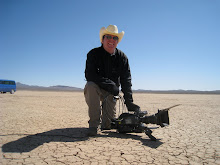


























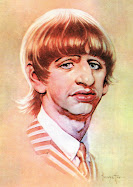






















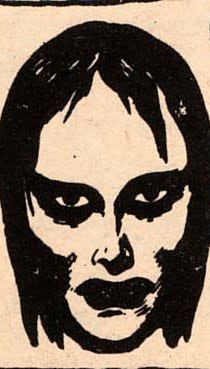









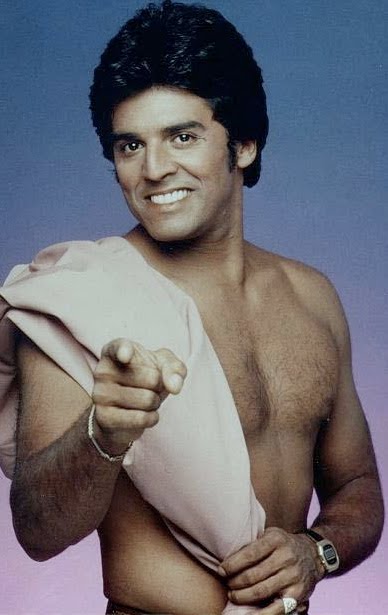









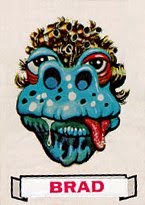























































No comments:
Post a Comment